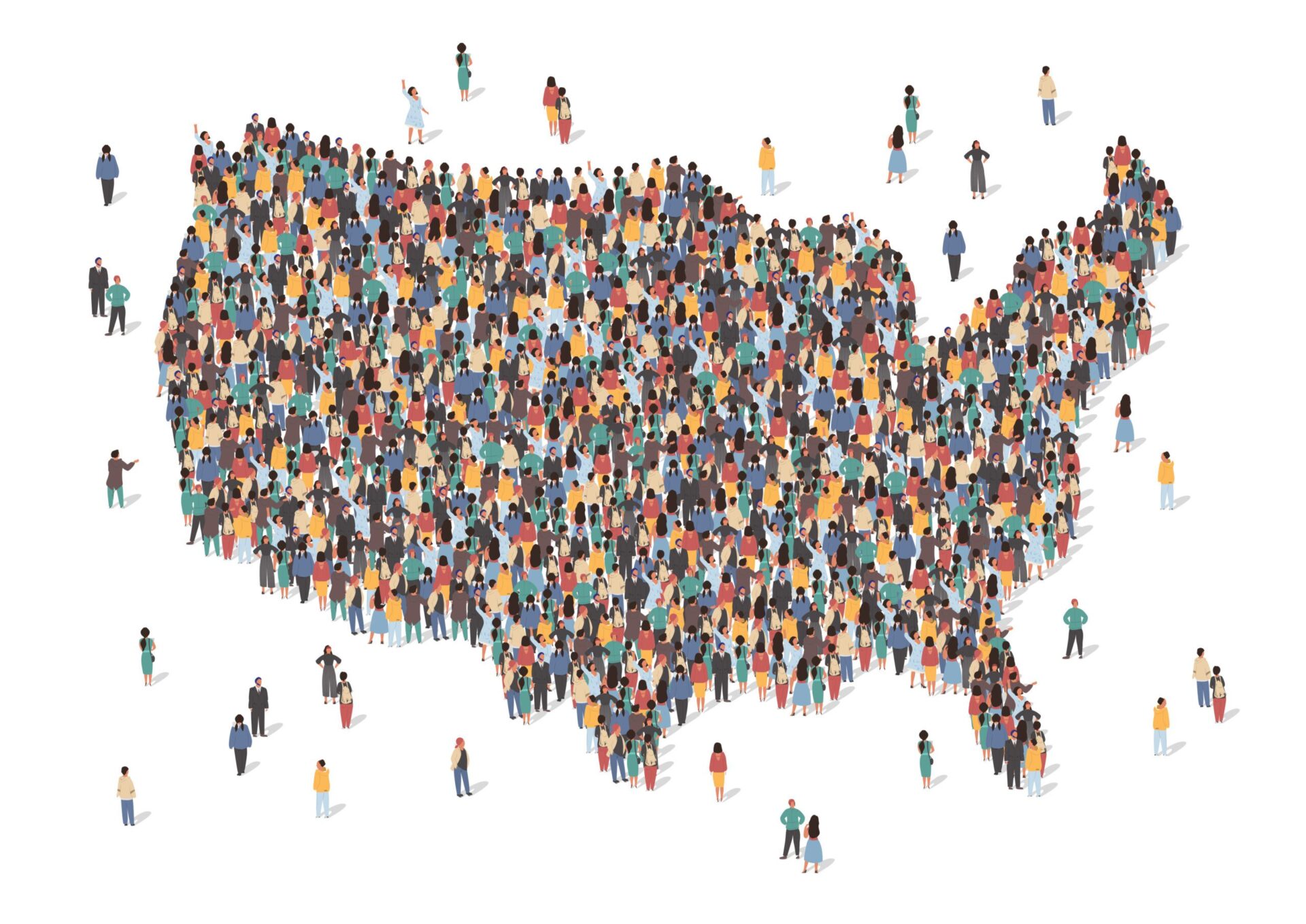By: Richard Herman
Today, labor shortage is a chief concern in the United States. According to the Job Openings and Labor Turnover Summary, the U.S. witnessed all-time high job openings in March, 2022. By only April, the labor market had already added 428,000 more jobs to the economy. Employers across the U.S. are having a difficult time meeting this demand and filling existing positions with skilled workers. While this may seem like a purely a domestic issue, the reality is that immigrants, and a guaranteed flow of new immigrants into the U.S, significantly contribute to meeting rising labor demands across all industries in the U.S. A sharp and consistent decline in immigration would lead the U.S. to continue to suffer from these labor shortages.
Recent research conducted by economists at the University of California, Davis, concludes that the U.S. had two million fewer immigrants in 2021 than would have been if the pre-2020 immigration trend had continued unchanged. Prior to the pandemic, the U.S. was inviting nearly one million immigrants each year. In 2016 alone, the U.S. invited around one million new immigrants into the country. This number came down to half a million in 2020 and dropped even further to 247,000 in 2021. In addition to the pandemic, regressive immigration policies during the Trump administration were also a major culprit in choking out immigration into the U.S. David Kelly, Chief Global Strategist at JPMorgan Funds, remarked that many immigrants returned to their native countries due to changes in immigration policies during the Trump administration.
But how much of an impact do stunted levels of immigration actually make in the U.S.? Let us discuss the relationship between immigrants and the labor shortage, and its impact on the U.S. economy.
Immigrants Can Help Alleviate the Labor Shortage
Today, the most common complaint amongst all employers in the U.S. is a lack of workers.
Since most sectors require a frequent flow of immigrants to meet labor demands, the most recent labor shortage is significantly hurting those businesses that traditionally rely on immigrant labor. Out of the two million “missing” immigrants, scholars attest that half would have also been college-educated. For this reason, the immigrant shortage is also a huge loss in terms of skilled labor, which, in turn, represents a significant loss for the long-term growth of the U.S. economy.
In the healthcare sector, immigrants play a huge role in meeting relentless employment demands. Tara Watson, Professor of Economics at Williams College, co-authored a recent study that shows that one in four health aides and one in five nurses in the U.S. are immigrants.
Recent immigration trends are less likely to reverse anytime soon because of huge backlogs in the U.S. immigration system. Millions of people are already waiting in line to obtain their green cards or visas. While this is bad news for employers, it may be good news for available workers. Due to the low supply of workers, the labor market is expected to remain very tight, which will eventually result in an increase in wages as companies increase their bids to gain workers. However, this is a short-term solution.
In the long run, companies will attempt to automate more jobs due to rising labor costs. Since the U.S. economy also relies on population growth, there are concerns regarding how very few young workers will replace the aging workforce, as another factor contributing to the labor shortage is retiring Americans. For instance, Baby Boomers, the largest generation of workers in U.S. history, have already reached retirement age.
The U.S. is also witnessing a decline in population growth. This year, the U.S. has seen the slowest population growth in its history. For years, birth rates in the U.S. have also been steadily dropping. Here, immigrants have actually become a major contributor to population growth. As stated previously, the U.S. economy is reliant on population growth and an influx of new labor. For this reason, immigrants in the U.S. prove to be a vital resource now more than ever.
Immigrants Create Jobs and Help the U.S. Surmount Global Competition
The American Immigration Council recently released a review report of the most recognizable American companies. The report reveals that 219 companies out of the Fortune 500 list were initiated by either immigrants or children of immigrants. The report is based on the 500 largest companies ranked by revenue from Fortune Magazine’s annual ranking of the U.S.
Despite immigrants only representing about 13.6 percent of the U.S. population, they make up around one-quarter of all American entrepreneurs. Andrew Lim, Director of Research at the American Immigration Council, attests that a large portion of job growth in the U.S. can be attributed to startups and new companies. Immigrants are, on average, also significantly more likely to start a business, creating new jobs entirely in the process.
Immigrants Pay Taxes
When it comes to undocumented immigrants, most people believe that they do not pay taxes. However, the truth is that about 50 to 75 percent of undocumented immigrants do pay taxes, using Individual Tax Identification Numbers (ITINs) to file income tax returns.
Undocumented immigrants can have an Individual Tax Identification Number (ITIN) without having a social security number. When non-documented immigrants file taxes, they are required to have paper proof regarding when they entered the country and how much they paid in taxes. Taxes are also deducted from the paychecks of those who do not file income tax returns. Furthermore, immigrants also pay property and sales taxes. Collectively, these tax sources result in billions of dollars in taxes each year.
The IRS received 4.4 million income tax returns from people who do not have social security numbers. In addition to these numbers, there are also individuals who paid taxes using fake social security numbers. In 2019, the IRS received only 3 million income tax returns from people who do not have social security numbers. This decline also reflects the recent decrease in several immigrant populations.
According to New American Economy, all U.S. immigrants, collectively, have a total spending power of about 1.3 trillion dollars. The huge capacity for immigrants to contribute to the U.S. economy as consumers should not be understated.
With declining rates of immigration into the U.S., the long-term health of the U.S. economy will suffer in all three key economic indicators: workforce, entrepreneurship, and consumer spending.
Richard Herman is a nationally renowned immigration lawyer, author and activist. He has dedicated his life to advocating for immigrants and helping change the conversation on immigration. He is the founder of the Herman Legal Group, an immigration law firm launched in 1995 and recognized in U.S. World News & Report’s “Best Law Firms in America.” He is the co-author of the acclaimed book, Immigrant, Inc. —Why Immigrant Entrepreneurs Are Driving the New Economy (John Wiley & Sons, 2009). Richard’s poignant commentary has been sought out by many national media outlets, including TheNew York Times, USA Today, BusinessWeek, Forbes, FOX News (The O’Reilly Factor), National Public Radio, Inc., National Lawyers Weekly, PC World, Computerworld, CIO, TechCrunch, Washington Times, San Francisco Chronicle and InformationWeek.



